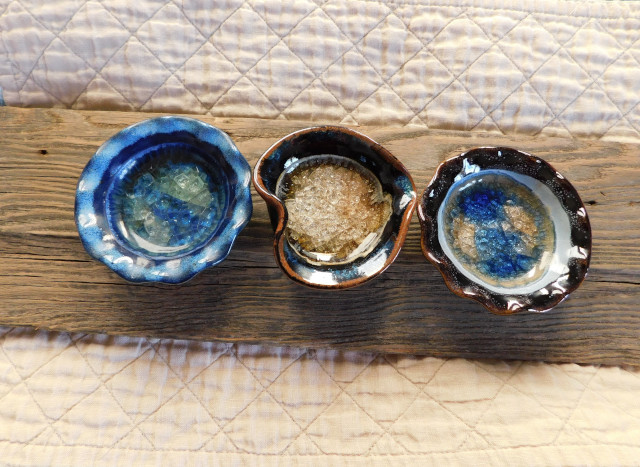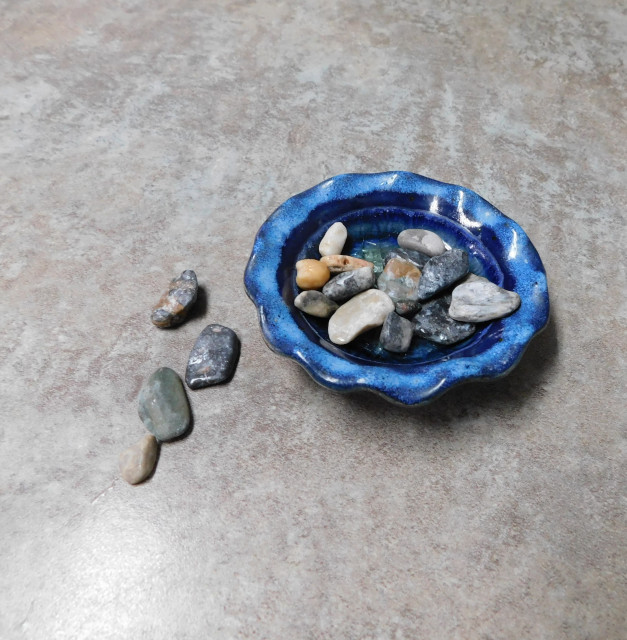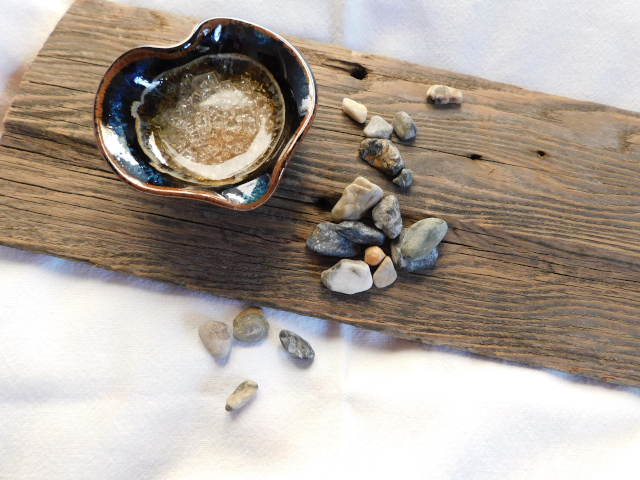In our church calendar, the last Sunday before Advent is called “In Memoriam.” Part of the morning service is given to remembering all those who were part of the church community, however tangentially, who have died in the previous year. As each name is read, together with their relations, a candle is lit. Gradually the darkened sanctuary is warm with candlelight. We sit in quietness, remembering, perhaps allowing a few tears to slip down our cheeks. But it is good. All these beloved should not be forgotten, for they have played a part in our lives.

These days of Novemberish darkness, when the prairie world where I live has turned into a monochrome study of the color of dead foliage, I am paying more attention to small items of beauty indoors. Besides the satisfaction provided by ever-generous houseplants, I have been given joy by what I’m going to call “memory pieces.” There are other people, besides our family and friends, who should not be forgotten.
Years ago, in our first visit to the Black Hills of South Dakota, the closest grocery store to our campground was in Keystone, the tourist town next to Mt. Rushmore. Amidst a host of typical souvenir shops with all manner of kitsch, from the mildly amusing to the downright offensive, we discovered one shop (called The Indians) that was owned and run by Indigenous artists and entrepreneurs. There were some cheaper articles (rent has to be paid, after all), but mostly the shelves were stocked with beautiful indigenous art work from all over the USA. Our hearts were quieted, our sense of justice gratified.
As Mennonite pacifists, we had found the ubiquitous gun culture displayed on t-shirts, gun holsters, posters, etc., deeply disturbing. As life-long hikers in the Canadian Rockies, we were more dismayed than astonished at what the sculptors (aka dynamiters) had done to Mt. Rushmore, formerly a sacred mountain for the Arapaho, Cheyenne and Lakota Sioux peoples. The official name of the sculpture is “Shrine of Democracy.” Given that the establishment of American democracy required the violent displacement of Indigenous peoples, the name seems bitterly ironic.

Years later, when we revisited the Black Hills, we spent almost all our time hiking through mostly unspoiled territory, but we did take time to revisit “The Indians” art store in Keystone because I wanted to purchase a few more items to take home with us – items of remembrance. Remembrance of those who are still with us, despite past efforts to erase, or at least forget, their presence.

One of those little glass dishes now sits by our kitchen sink as a soap dish, adding color along with sanitation. Every time I rinse soap residue from the pebbles, I am touched again by the loveliness of the glass work.
The pebbles themselves are a memory of a quiet afternoon on the beach of Beacon Hill Park, Victoria, BC. It was late summer; the grass was a uniform dry brown, the flower beds looked disheveled, listless. They wanted to go to sleep for the winter, but it was still too hot. So we chose not to explore the park. Instead, we went down to the ocean beach, planted our bums near some driftwood and ran our fingers through the sand, picking up tiny rocks to admire their uniqueness.

There is something about touching stone, whether it be a boulder or a pebble or something in between, that feels like eternity. Celtic mystics have written about the “thin places” on earth, where the mystery of the divine Other draws near. Where our human selves become small and insignificant, yet also miraculous and exultant. Pebbles are not usually considered such thin places; they’re just pebbles.
Until they are chosen as memorials.
I prefer pebbles to grandiose sculptures.
